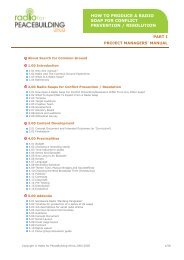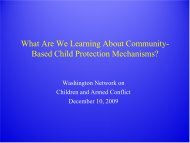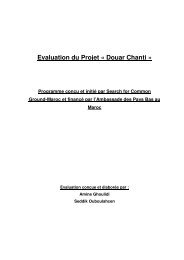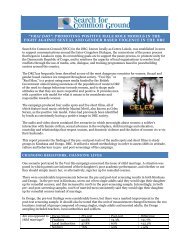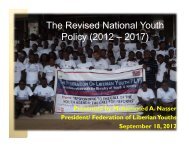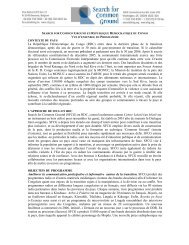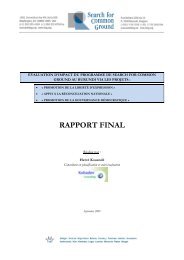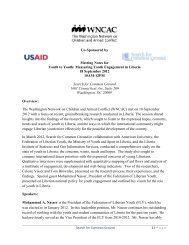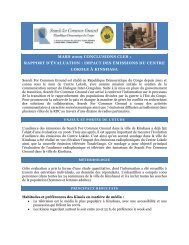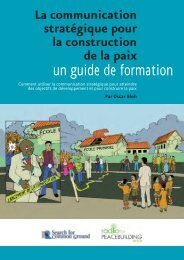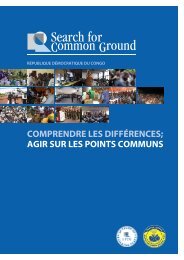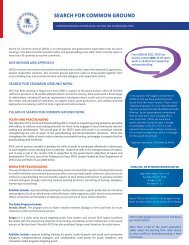The Common Ground Network for Life and Choice Manual
The Common Ground Network for Life and Choice Manual
The Common Ground Network for Life and Choice Manual
You also want an ePaper? Increase the reach of your titles
YUMPU automatically turns print PDFs into web optimized ePapers that Google loves.
Appendix 3.7<br />
Using the <strong>Common</strong> <strong>Ground</strong> Opinion Survey in a Workshop Setting<br />
1. Participants are asked to complete the questionnaire in the last ten minutes of the initial full<br />
group session. Advise people to work quickly <strong>and</strong> avoid getting hung up on a getting a<br />
“right answer.” This exercise is intended to provide a “rough cut” of views, not reliable<br />
social science research.<br />
2. Instructions <strong>for</strong> participants are as follows. <strong>The</strong>y are to fill out the first portion of the<br />
questionnaire answering <strong>for</strong> themselves. Participants are to fill out the second version of the<br />
questionnaire as they think people in the room who hold the opposite view on abortion would<br />
answer it. <strong>The</strong> underlined qualifier is important – it is misleading to compare answers of the<br />
people present with views identified with the most strident public advocates. Possible<br />
answers range from strongest agreement to strongest disagreement. People are told they<br />
need to designate themselves as either pro-choice or pro-life in the appropriate space, in<br />
order <strong>for</strong> their answers to be tabulated.<br />
3. Tabulation: PL <strong>and</strong> PC’s are separated. Using two blank questionnaires <strong>for</strong> recording (one<br />
<strong>for</strong> the PL answers, one <strong>for</strong> the PC), all answers <strong>for</strong> each question are recorded <strong>and</strong> then the<br />
average score is determined. As the average scores are calculated <strong>for</strong> the four categories <strong>for</strong><br />
each question (PC’s views, PC’s views of PL, PL’s views, PL’s views of PC), these are<br />
entered into the results <strong>for</strong>m, <strong>and</strong> then transferred onto similar charts on large newsprint<br />
showing the four columns shown on the results <strong>for</strong>m. It is best to prepare the blank<br />
newsprint charts ahead of time.<br />
4. In a first session after lunch, the newsprint charts are displayed <strong>and</strong> the <strong>for</strong>mat explained.<br />
People are told that a difference of less than 1 point is not notable. More than 2 is very<br />
different. <strong>Common</strong>ality can be seen where answers are within a point. A middle score (3) is<br />
ambiguous – it can mean everyone answered 3 or that there was a wide spread which<br />
averaged to 3.<br />
5. A group discussion is led by asking participants the following questions. Answers can be<br />
recorded on separate newsprint. A quicker approach is to circle the answers in each category<br />
using different color markers (circle agreements in blue, disagreements in red, etc.)<br />
− Where does the chart show areas of agreement?<br />
− Where does the chart show areas of difference?<br />
− Where does the chart show misperceptions?<br />
Start with one side, <strong>for</strong> example PC, <strong>and</strong> identify where there are significant differences<br />
between actual answers <strong>and</strong> predicted answers. <strong>The</strong>n take the other side. Draw attention<br />
to stereotypes revealed in the misperceptions.



